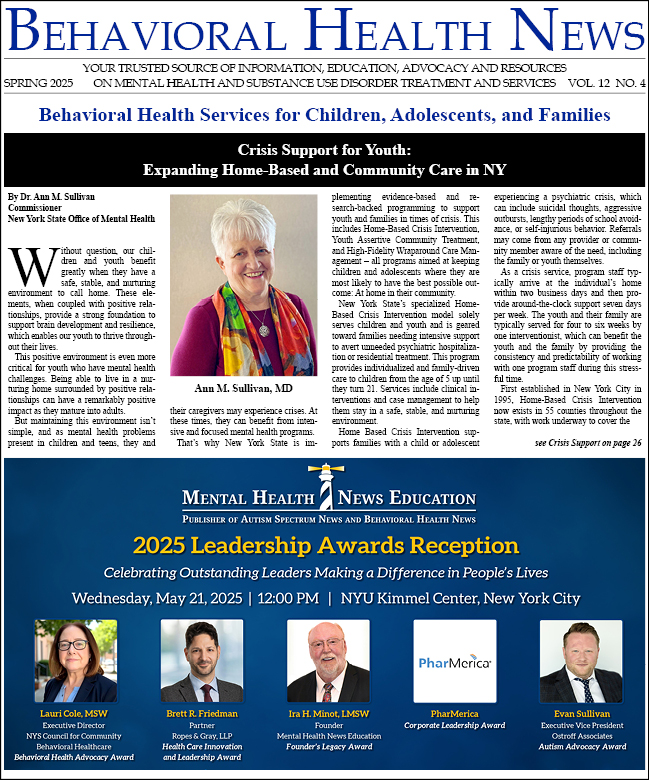-
Will Managed Care Advance the Goals of Community Mental Health?
In the middle of the 20th century, when American mental health policy switched from institution-based to community-based, the primary goal was to enable people with severe, chronic mental illness to live freely and safely in the community with the same rights as other Americans. Considerable...
-
The State of Children’s Mental Health and Associated Costs of a Fragmented System
Past public policy has focused mostly on children’s mental health issues—and with good reason. While 1 out of 10 children has a serious emotional disturbance, only 20% ever receive treatment. Children with mental health issues have the highest school dropout rate among all disability groups,...
-
Perspectives on the Transition to Managed Care
The year 2014 will provide opportunities for OASAS and the other behavioral health agencies in New York as we prepare for the transition to Medicaid Managed Care beginning in 2015. The goal of this change is to create a system that provides New Yorkers with fully integrated behavioral health...
-
Positioning for the New York State Managed Care Transition
Preparing your leadership and line staff for the “managed care transition,” can seem daunting and perplexing. There is no simple formula that applies to providers in general, or certain types of providers, except in the broadest sense. Rather, it involves a critical assessment of strengths,...
-
Practical Tips to Working with Managed Care
With the changes to managed Medicaid, it is important for therapists to be ready to advocate for their clients and for the care they deserve. After over sixteen years of dealing with managed care, there are certain tips that might be helpful if you are new to the process of calling companies. Often...
-
Preparing for Managed Care: Staff Credentialing, Evidence-Based Practices, and Fiscal Systems
For decades, behavioral health (BH) professionals have fought for the right to have mental health (MH) and substance use disorders (SUD) regulated in a similar manner as medical/surgical conditions. First the Mental Health Parity and Addiction Equity Act of 2008 and more recently the 2012...
-
The NYSPA Report: The Final Parity Rule – What NYS Should Do About It
On November 21, 2013, five years after the passage of the Paul Wellstone and Pete Domenici Mental Health Parity and Addiction Equity Act of 2008 (MHPAEA), the federal Departments of the Treasury, Labor and Health and Human Resources issued the final rule governing its implementation. Due to the...
-
From Transition to Transformation
The New York State behavioral health system’s evolution toward greater care integration and accountability and a focus on recovery will include larger roles for managed care organizations in developing and managing systems of care, expanded care coordination and case management services, and new...
-
Integrating Mental Health and Substance Abuse Treatment
Integrated treatment produces better outcomes for individuals with co-occurring mental and substance use disorders. Without integrated treatment, one or both disorders may not be addressed properly. Mental health and substance abuse authorities across the country are taking steps to integrate...
-
Implementing Best Practices – Seven Core Processes
Implementing best practice care for persons struggling with mental illness and substance use in real world settings can be challenging. At the Institute for Community Living (ICL), where we provide behavioral and physical health care for a widely diverse population and place strong emphasis on...







